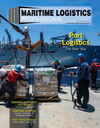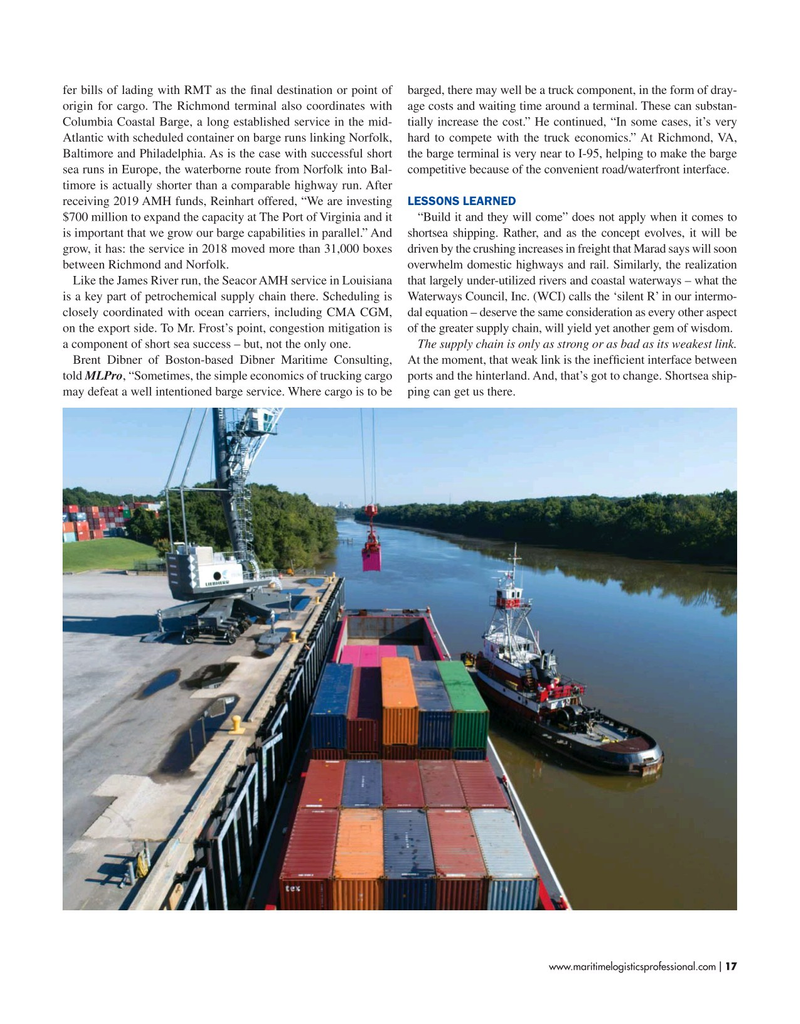
Page 17: of Maritime Logistics Professional Magazine (May/Jun 2019)
US and International Navy Ports
Read this page in Pdf, Flash or Html5 edition of May/Jun 2019 Maritime Logistics Professional Magazine
fer bills of lading with RMT as the ?nal destination or point of barged, there may well be a truck component, in the form of dray- origin for cargo. The Richmond terminal also coordinates with age costs and waiting time around a terminal. These can substan-
Columbia Coastal Barge, a long established service in the mid- tially increase the cost.” He continued, “In some cases, it’s very
Atlantic with scheduled container on barge runs linking Norfolk, hard to compete with the truck economics.” At Richmond, VA,
Baltimore and Philadelphia. As is the case with successful short the barge terminal is very near to I-95, helping to make the barge sea runs in Europe, the waterborne route from Norfolk into Bal- competitive because of the convenient road/waterfront interface.
timore is actually shorter than a comparable highway run. After receiving 2019 AMH funds, Reinhart offered, “We are investing LESSONS LEARNED $700 million to expand the capacity at The Port of Virginia and it “Build it and they will come” does not apply when it comes to is important that we grow our barge capabilities in parallel.” And shortsea shipping. Rather, and as the concept evolves, it will be grow, it has: the service in 2018 moved more than 31,000 boxes driven by the crushing increases in freight that Marad says will soon between Richmond and Norfolk. overwhelm domestic highways and rail. Similarly, the realization
Like the James River run, the Seacor AMH service in Louisiana that largely under-utilized rivers and coastal waterways – what the is a key part of petrochemical supply chain there. Scheduling is Waterways Council, Inc. (WCI) calls the ‘silent R’ in our intermo- closely coordinated with ocean carriers, including CMA CGM, dal equation – deserve the same consideration as every other aspect on the export side. To Mr. Frost’s point, congestion mitigation is of the greater supply chain, will yield yet another gem of wisdom.
a component of short sea success – but, not the only one. The supply chain is only as strong or as bad as its weakest link.
Brent Dibner of Boston-based Dibner Maritime Consulting, At the moment, that weak link is the inef?cient interface between told MLPro, “Sometimes, the simple economics of trucking cargo ports and the hinterland. And, that’s got to change. Shortsea ship- may defeat a well intentioned barge service. Where cargo is to be ping can get us there. www.maritimelogisticsprofessional.com 17
I

 16
16

 18
18
